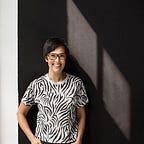Bringing awareness of our physical bodies into racial equity conversations
What is the sensation in your stomach when a friend shares their experience of racial inequity?
What happens to your breath when a colleague tells you they experience you as blind to your own privilege?
What happens to your posture as you review the data that reflects the number of employees/students/leaders of color in your organization, business or school?
The process of racial equity inquiry in schools or businesses can surface questions about organizational procedures, policies, and practices that can feel overwhelming and for some people even scary. Sometimes what is surfaced can create feelings of defensiveness and anxiety. In my work as an equity and inclusive leadership coach I notice defensiveness and anxiety show up in the following physical gestures: crossing arms over chest and tucking chin, standing up suddenly and moving to the back of the room, clearing the throat and touching the neck, leaning the head back and jutting the chin forward and / or narrowing the eyes and pursing the corners of the mouth. When I see this happen, I take a moment to offer groups the time to breathe in to the physical configuration of the room and to notice themselves as physical beings with physical responses. This invitation is often met with the sound of exhales, inhales and then a shifting in seats. My next invitation is to notice the sensations of the body as we move through content in order to become more intentional and perhaps truthful with our verbal responses. The alignment of the language and expression of the physical body with the language and expression of the spoken word is critical to uncovering clarity together.
The goal of acknowledging the physical body is not to call public attention to individual bodies but to encourage participants to listen to the truths of their own bodies as they engage in passive and active conversation with material and each other. Once participants can tune in physically, I encourage them to think about how they configure spaces to protect, inspire, teach and lead their bodies and the bodies of others.
There are ways that narratives about culture, policy and practice within a school, business or organization can impact the postures of groups of people, the ways that we move in common areas and the ways we come together to work through our challenges. An entry point for a conversation about racial equity and inclusion within an institution or business can start with an assessment of the physical space.
What colors/signs/symbols welcome visitors and guests to your business, organization or school? What art and artifacts from the institution or organization are on display? What are the assumptions being made about the people who move through the physical plant? What values are communicated from the first point of sensory contact? What is the impact of these values on the individual physical body, or the collective body? What do you notice? What do you feel?
Once the physical dimensions of racial equity have been introduced, it is often easier to coach for engagement by normalizing conversations about what is being experienced. This is directly tied to one of the fundamental competencies in stewarding racial equity transformation: the ability to name what is taboo. In academic environments and in business environments it can be taboo to talk about feelings and sensations, especially in environments where ideas and concepts have more weight than feelings. But we human beings are not only ideas, we are physical bodies experiencing the physical manifestation of ideas through our systems and environments. In order to imagine systems and environments that are equitable and inclusive we need to be able to identify and name how the physical bodies of individuals and organizations can move in support of the racial equity we seek.
Where are your shoulders?
Are you holding your breath?
How do you feel?
